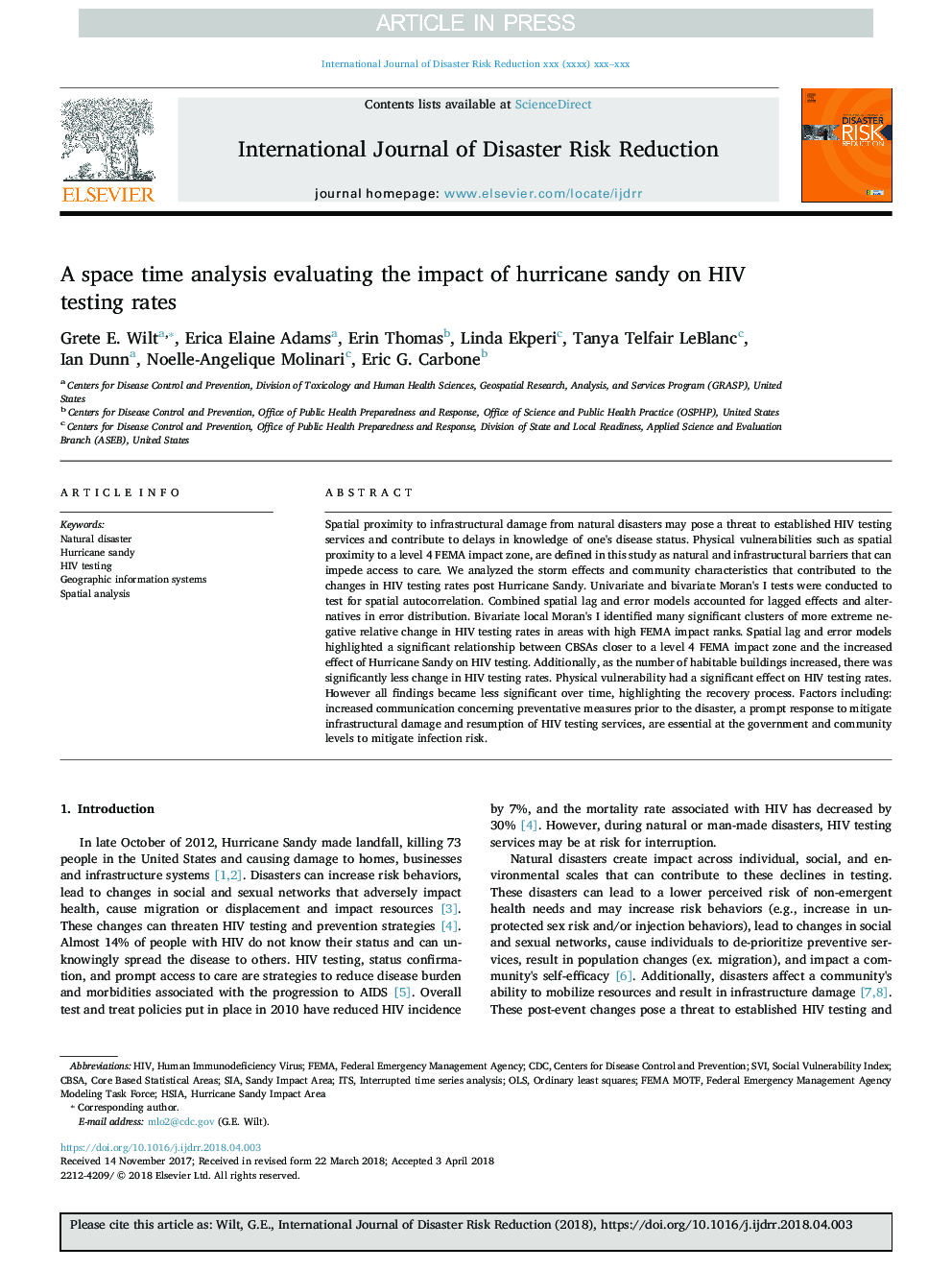| Article ID | Journal | Published Year | Pages | File Type |
|---|---|---|---|---|
| 7471858 | International Journal of Disaster Risk Reduction | 2018 | 6 Pages |
Abstract
Spatial proximity to infrastructural damage from natural disasters may pose a threat to established HIV testing services and contribute to delays in knowledge of one's disease status. Physical vulnerabilities such as spatial proximity to a level 4 FEMA impact zone, are defined in this study as natural and infrastructural barriers that can impede access to care. We analyzed the storm effects and community characteristics that contributed to the changes in HIV testing rates post Hurricane Sandy. Univariate and bivariate Moran's I tests were conducted to test for spatial autocorrelation. Combined spatial lag and error models accounted for lagged effects and alternatives in error distribution. Bivariate local Moran's I identified many significant clusters of more extreme negative relative change in HIV testing rates in areas with high FEMA impact ranks. Spatial lag and error models highlighted a significant relationship between CBSAs closer to a level 4 FEMA impact zone and the increased effect of Hurricane Sandy on HIV testing. Additionally, as the number of habitable buildings increased, there was significantly less change in HIV testing rates. Physical vulnerability had a significant effect on HIV testing rates. However all findings became less significant over time, highlighting the recovery process. Factors including: increased communication concerning preventative measures prior to the disaster, a prompt response to mitigate infrastructural damage and resumption of HIV testing services, are essential at the government and community levels to mitigate infection risk.
Keywords
Related Topics
Physical Sciences and Engineering
Earth and Planetary Sciences
Geophysics
Authors
Grete E. Wilt, Erica Elaine Adams, Erin Thomas, Linda Ekperi, Tanya Telfair LeBlanc, Ian Dunn, Noelle-Angelique Molinari, Eric G. Carbone,
